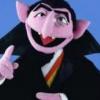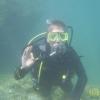-
Posts
479 -
Joined
-
Last visited
DaveCromie's Achievements

Established Member (3/9)
189
Reputation
-

What is the best for 1/48 FW 190-A8 and Hellcat?
DaveCromie replied to Harrier/ViperFan's topic in Aircraft WWII
I'll add to the chorus of recommendations for the Eduard Hellcat having built the 1/48 Dual Combo which came with photoetch and masks for well under £20. The kits pretty much fell together and from my limited research certainly appear to be accurate. Conveniently they do a FAA Dual Combo allowing you to build both Mk I and Mk II. DC -
Totally off topic but it's great to meet another Hitchhiker on here. Also great to see the only geniune Zaphod Beeblebrox as your profile pic as opposed the modern one DC
-
I haven't built the 109 but from building other Airfix kits in their new plastic I have found that supporting the component in question with a large blob of blutac while using a razor saw or heated scalpel blade to remove the part with some of the sprue at each end (which can then be trimmed closer to the part without the stress of the whole sprue frame being attached) has worked for me. Apologies for the terrible sentence structure but my brain is too tired to do proper English! Cheers DC
-
Hi Seahawk Sadly I can't answer your specific questions but from building three Eduard Hellcats in 1/72 (Mk I, Mk II and NF Mk II) and in two in 1/48 (Hellcat Mk I and Mk II) I can say that the brace is included as PE in their Hellcat Mk I/Mk II Dual Combo kits in 1/72 (Link) and 1/48 (Link ) where they specify that it is solely for the Mk Is. In the 1/72 instructions they give a colour call out for the brace to be Gunze Aqueous H58/Mr Colour C27 Interior Green but in 1/48 they call out for Gunze Aqueous H51/Mr Colour C11Light Grey. The Mk IIs represented in both scales are JX814, JZ935 and JZ796 which are all after your proposed cut off point for the deletion of the rear wndows on Mk IIs. . Hope this of some help and I haven't caused more confusion! Cheers DC
-
Yup Mike is my go to dealer for Eduard kits either by mail or at shows...... Just saying.... DC
-
Jan While not the recipient of this message, may I point out that you, Sir, are a gentleman and a scholar! DC A happy AZ/KP customer
-
Nah, couple of hours below decks and it will buff out..... Sorry, couldn't resist! DC
-
Looking at the rather nice picture posted by JackG i would suggest that the discolouration shown is due to running the engine at a lean setting. The lead in the exhaust mixture causes a lighter than expected staining. I do, as usual, stand to be corrected! DC
-
Hi Gwart I thought that was the case with the camera ports but didn't know about the headrest support, I guess I'd better replace my scratch built ones before I glue the canopies in place! Good job I read this before I got the glue out Cheers DC
-

1970's - Kits that came with a picture frame???
DaveCromie replied to BIG X's topic in Aircraft WWII
Back when I was a teenager, a friend of mine's dad used to do this to allow him to build two decal options from each kit he bought. It looked amazingly effective, especially with brightly coloured US Navy jets! DC -
I haven't built the AZ Mk XIVs but I have built all three versions of the Sword ones. I can't comment on accuracy as I didn't compare them to any drawings but I can comment on the kits. I found a couple of minor issues with the Sword kits, nothing at all that can't be solved by applying basic modelling skills but worth noting in my opinion: 1. On the FR kit, Sword recommend cutting out holes in the lower fuselage to accommodate vetical camera lenses, which, according to my references were never fitted (I stand to be corrected on this though) 2. Again on the FR kit, I found the camera port to be heavily flashed and once cleaned, very thick lipped so a good going over with a round file is required to make it more presentable 3. On the low back kits the instructions show the rear head armour and its supporting structure as being molded to one of the fusleage halfs. They aren't. They need to be scratch built out of plastic sheet. While not in the least bit difficult, it is a bit of a cheat on Sword's part. 4. On all three versions the instructions show the instrument panel being fitted against tabs either side of the lower cockpit part. Those tabs aren't there. 5. It is easier to insert the cockpit components into the fuselage from below and separately i.e. instrument panel and rear cockpit framing/seat assembly THEN add the lower cockpit part. This means that the IP and rear cockpit/seat assembly are the correct distance apart and don't get pulled out of alignment when being fitted. Other than these very minor niggles, I found the kits to be wee gems. They are currently stalled at the painting stage due to a damaged airbrush nozzle but unless I screw up massively they should turn out very nicely. Just my tuppence worth DC
-
And once again the Britmodeller posse shows the incredible depth of knowledge and the willingness to share that knowledge to its truest extent. Thank you to everyone for posting such detailed information on the B-25 from a complete newb to the type All the best DC
-
Cheers Duncan DC
-
Obviously this question can't be fully answered until the plastic is in someone's hands but is it likely to be too much work to model this as an RAF Mitchell Mk II? I'm developing a bit of a thing for American aircraft in RAF markings but my lack of knowledge and resources does hinder me somewhat. Cheers DC
-
Hi Kev Superglue (aka Cyanoacrylate or CA) is the way forward. Enjoy your build. DC



